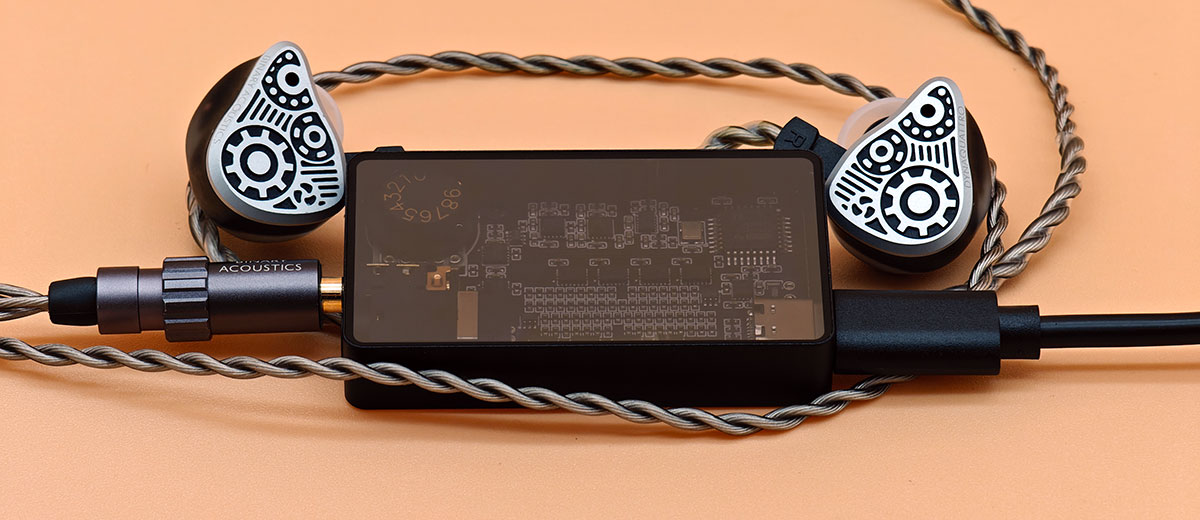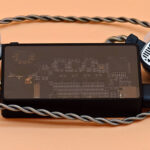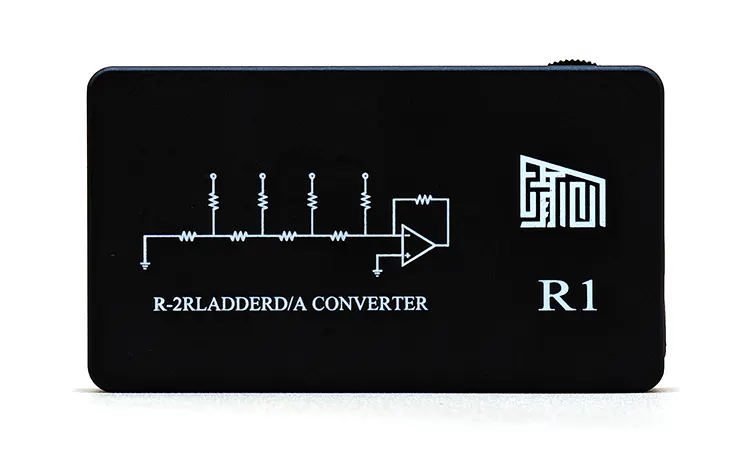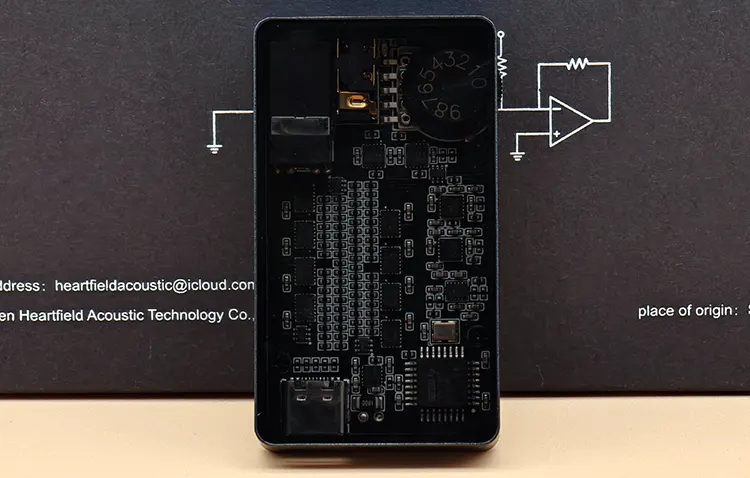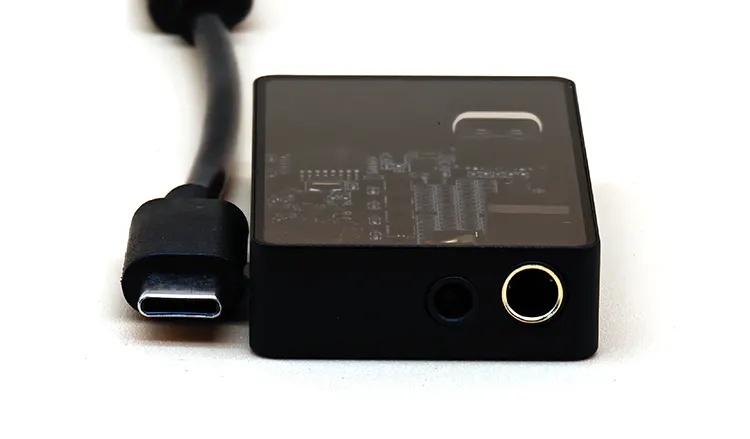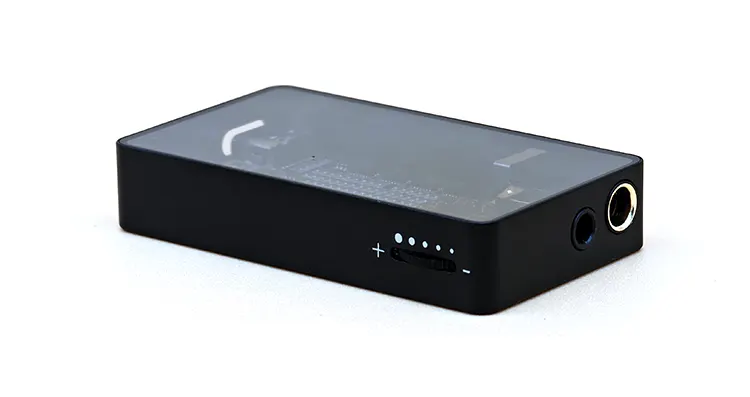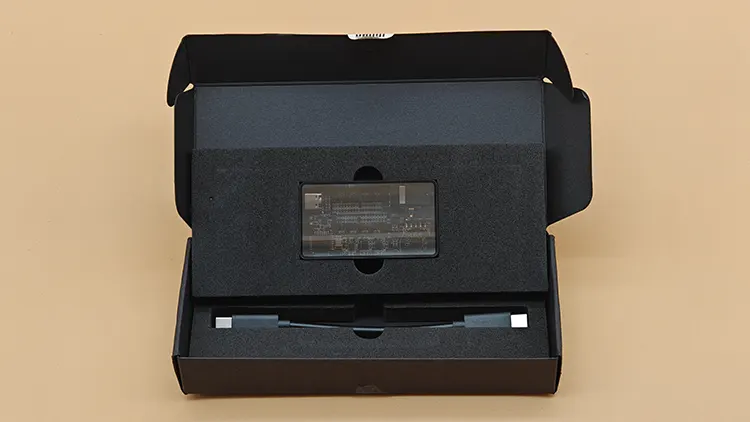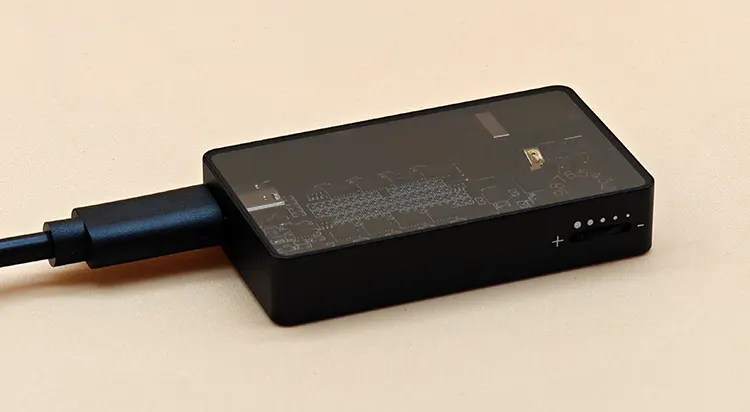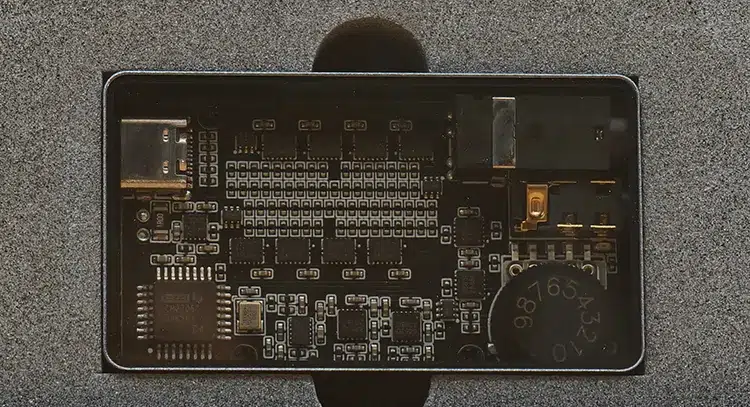In this feature, Kurt reviews the Heartfield R1, an affordable dongle DAC featuring a proprietary 64-resistor R2R architecture and balanced output. It is priced at $159.
Disclaimer: This sample was sent to me in exchange for my honest opinion. Headfonics is an independent website with no affiliate links or status. I thank Linsoul for their support.
Click here to learn more about the Linsoul products we have previously reviewed on Headfonics.
This post follows our current scoring guidelines which you can read in more detail here.
HeartField is a new player in the audio community. Despite that, they have already released several IEMs with different driver configurations and price ranges, one of which we have reviewed already called the Blanc.
They enter with their first portable DAC and AMP, the HeartField R1. It’s not the common chip-based DAC such as my compared units on page 2, the FiiO KA17 and the Colorfly CDA-M2. Rather, it’s a unique budget DAC amp with a proprietary R2R architecture.
Features
The HeartField R1’s proprietary R2R ladder amp uses precise resistor ladders to control the current flow precisely, creating a smooth, natural, and high-quality sound.
Unlike a chip-based DAC amp, R2R DACs aim for a natural sound. Their main advantage over regular chip-based DAC amps is their unfiltered, rich, and analog-like sound.
However, R2R technology doesn’t achieve the same level of “cleanliness” as chip-based DACs and can be more prone to slight distortions if resistor accuracy isn’t high. It’s also generally larger due to the physical resistor network.
HeartField’s R2R architecture includes 32 ultra-high precision resistors per channel, totaling 64 resistors. Each resistor has a 0.1% tolerance, ensuring uncompromised audio fidelity and precise signal reproduction.
Design
The HeartField R1 features a distinctive design, with a transparent top that allows a view of the R2R ladder, while the bottom remains opaque. The device is lightweight at only 19.8 grams, making it highly portable.
The transparent top also highlights ports and an LED indicator, along with HeartField’s proprietary R2R technology branding. This design adds a unique visual appeal while emphasizing the advanced engineering within.
On the side, the device features a rotary volume knob, which, while convenient, could lead to sudden volume changes if accidentally adjusted. To address this risk, a volume lock feature could help prevent unintended volume spikes and enhance user safety.
I/O
The HeartField R1 offers 3.5mm and 4.4mm headphone jacks, conveniently located side by side opposite the USB-C port. This placement allows for easy access and helps keep the device compact and organized.
Although no maximum volume output is specified for these jacks, the design makes them ideal for various audio setups. However, the USB-C port feels slightly loose, which may affect long-term stability and durability.
HeartField recommends setting the source device to maximum volume and controlling the R1’s volume manually for the best sound quality. They also advise users to keep the device away from other electronics to avoid potential signal interference due to the lack of shielding.
Unfortunately, the R1 struggles with native DSD playback because of the resistor ladder architecture. For optimal compatibility, HeartField suggests using 16-bit audio in exclusive USB mode, which can help deliver the best listening experience.
Controls
The HeartField R1 offers a single control option through its spiky-designed volume dial, which is used for analog volume adjustment. This knob provides a tactile experience, fitting the device’s analog-focused design.
An LED indicator on the device lights up brightly when sufficient power is supplied, helping users confirm optimal operation. If the power is insufficient, the LED will flicker, signaling a need for adjustment.
There’s no app-based control since the R1 uses fully analog technology without digital chips. This design choice ensures a pure analog experience aimed at delivering the best possible sound quality.
Packaging & Accessories
The HeartField R1 comes packaged in a sleek, rectangular black box that feels minimalistic. The top of the box features subtle branding with the HeartField logo, “R1,” and “R2R” printed, while the bottom includes a detailed illustration of the R2R circuitry.
Inside, the packaging is straightforward and focused, with only the essentials provided. The box contains the HeartField R1 DAC amp, a USB-C to USB-C cable, and a compact guidebook that covers setup and basic usage instructions.
The included USB-C cable matches the black color of the box and the R1 itself, creating a cohesive look. Although the accessory list is minimal, the essentials complement the R1’s design and purpose.
Wired Connectivity
USB-DAC
My experience with using the HeartField R1 as a stationary DAC amp has been mixed, mainly due to noticeable distortion.
When connected to my laptop, I encountered significant distortion, including loud popping noises when plugging in my IEMs, which was concerning for ear safety.
This issue wasn’t isolated, as a second HeartField R1 unit produced similar distortion, suggesting it’s an inherent design characteristic rather than a quality control issue.
However, after a period of listening, the distortion lessened, which suggests that a form of “burn-in” might reduce these issues over time.
Eventually, I was able to use it like a standard DAC amp, though low-volume listening still produced some droning and distortion. This indicates that while usable, the R1 may not perform as cleanly as other DACs in stationary unshielded setups.
USB-OTG
Connecting the HeartField R1 to my phone via USB-OTG yielded better results, with significantly less electrical interference and more manageable levels of distortion. The overall audio experience was smoother, making it more practical for on-the-go use.
Additionally, the R1 didn’t noticeably drain my phone’s battery, as one hour of use at full volume only reduced the phone’s charge from 100% to 99%.
The device’s lightweight design also made it convenient to carry around, although its somewhat large size may limit its portability for some users.
In terms of sound quality, the USB-OTG connection maintained a warmer and more detailed audio profile, which suited genres like jazz and classical well.
However, users who prefer a tighter, more analytical sound might find the R1’s analog warmth a bit too relaxed for high-energy tracks.
Sound Impressions
Summary
Despite the distortion issues, the HeartField R1 has encouraged me to try all my IEMs with it, thanks to the unique experience it offers. The R2R DAC technology provides a sound profile that is distinct and a great experience for all audio enthusiasts.
HeartField’s R2R technology excels in sound quality, giving a notable boost to bass, mids, and timbre. This improvement brings out both performance and clarity, making the overall listening experience richer.
The bass sounds snappier with more presence, enhancing the low-end performance. Most IEMs used with the R1 showcase better sub-bass depth and rumble.
The mids are significantly clearer, allowing every vocal nuance to stand out, with a sharper and warmer tonal balance overall. This clarity in the mids makes vocals feel more intimate and precise.
Treble performance is controlled, with no sibilance or harshness, providing a relaxed high-end presentation. Listeners who enjoy a smoother treble will likely appreciate the R1’s handling of higher frequencies.
Timbre
The HeartField R1 enhances the timbre of most IEMs, adding a subtle sharpness that brings out finer details. This adjustment feels more like a refinement, elevating the overall sound quality.
The R1’s timbre has a distinctly analog quality, producing a sound that feels organic and emotionally engaging. It leans more toward a musical and immersive experience rather than an overly analytical one.
Additionally, the HeartField R1 keeps the timbre faithful to the source material, offering a natural yet enhanced listening experience. The added clarity contributes positively to the overall sound, making it more enjoyable without altering the essential character.
Staging & Dynamics
The HeartField R1 maintains similar staging characteristics, without significant changes in soundstage width or height. The clarity boost provided by the R1 doesn’t notably affect the staging.
The staging width and height seem to depend more on the IEMs used, as the R1 does not introduce noticeable changes in spatial presentation.
However, the R1 does enhance imaging precision, making vocal placements more centered and instrument separation more defined for a more immersive experience.
While the clarity aids imaging, it doesn’t improve the dynamic range much. Unfortunately, the distortion interferes with volume control, hindering any impactful dynamic presentation.
Click on page 2 below for my recommended pairings and selected comparisons.




